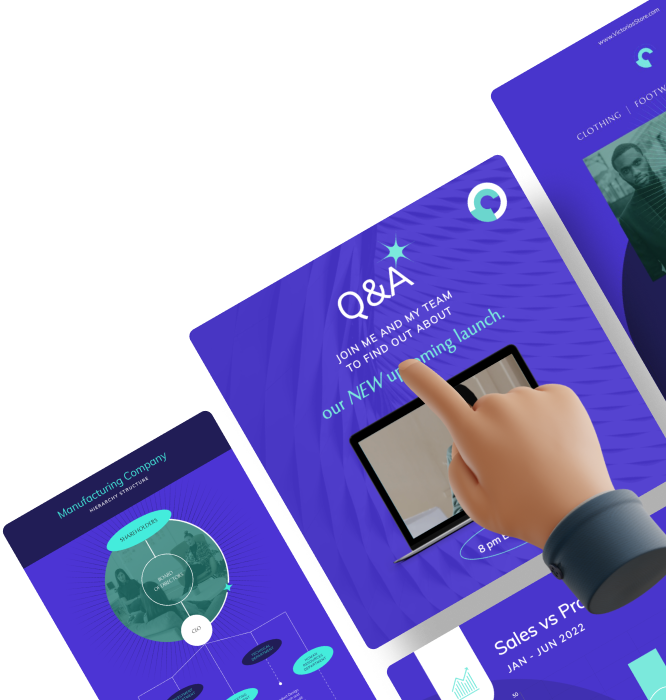
14 Types of Reports and When to Use Them (+ Templates)


Reporting is an essential part of business. In order to provide sophisticated and innovative reporting and analysis for your business or organization, you need to understand the various types of reports and when you'll need to use them.
Simply knowing how to write a report isn't enough. The right types of reports significantly impact an organization, fundamentally changing the way people perform their activities and make decisions.
However, deciding on a report is still a daunting task for many organizations. In this guide, we've put together a list of 14 types of reports and when you should use them.
Since you're here reading this, we're assuming you likely need to write a report.
So, before we dive into the various types of reports, you can check out our handy guide on the proper report writing format to get started with your report writing process. We've included report writing templates to get you started.
Here’s a short selection of 8 easy-to-edit report templates you can edit, share and download with Visme. View more templates below:

An annual report is an in-depth, comprehensive report on a business's achievements and financial statements from the preceding year. The first few pages of the report contain an eye-catching design and an overview of the organization's past year's activities and include future schemes.
Organizations use this report to give shareholders and other interested people information about the company's activities and financial performance.
Sometimes, jurisdictions require organizations to create and disclose annual reports, making it the most important one in this list.
You can use this type of report to:

A weekly report reviews a workweek that includes the works you have completed and ones that are still in progress to help you outline your workflow for the upcoming week.
So, a weekly report is similar to an annual report. But while annual reports give an overview of a year, weekly reports provide a snapshot of a week.
It allows the management team to take a quick look at what the employees are doing, including their challenges, strengths and weaknesses. On the flip side, the report can give the employees an idea of their role in the organization.
Use this report when you want to:

As the name suggests, sales reports are submitted by salespeople to the team to inform them about the on-field scenarios. In other words, a sales report is a document that summarizes the sales performance of a company over a specific period.
The report includes data on leads generated, new accounts, revenue, sales volume, KPIs and many other crucial ones. Furthermore, it helps you take out the guesswork from your business decisions, giving you a clear view of the sales process of your business.
One of the crucial benefits these types of reports provide is that you can set them to various frequencies and key performance indicators. Here are some examples:
Track KPIs such as daily sales calls, leads generated and many others. Here is an example template:

A monthly sales report helps you share the highlights, metrics and insights about your customer base with your stakeholders.

With a quarterly sales report, you can summarize your weekly and monthly sales report on a quarterly basis.

A yearly sales report is a lengthy, detailed version of your quarterly sales report. Use this to summarize your business' yearly sales performance, just like an annual report.


Over the past few decades, data analysis has become a vital part of business intelligence and standard industry practice. Statistics show that the annual revenue from the global big data analytics industry is expected to reach $68 billion by 2025. This is because the majority of businesses are adjusting their strategies based on data-driven insights.
So, in this digital era, one can not imagine business growth without data analytics. This is where analytical reports come into the picture. An analytical report helps you evaluate business performance based on data insights.
The best thing about these types of reports is that they provide you with recommendations instead of playing with numbers.
Use this report when you need:


If you're a marketer, you know that no matter how extraordinary your marketing campaign performed, you need to monitor every single aspect of your campaign. It will not only help you shape your marketing strategy but give the upper management all the relevant information they are looking for.
Thus, making a marketing report is one of the key elements of every marketing strategy. A marketing report includes data from the marketing channels to visualize the overall performance of your campaign.
In simple words, these types of reports help you understand whether the marketing strategies you currently use are doing well or not.
Use marketing reports when you need to:

Trends report, also known as trend analysis report, allows you to report on the standard up-to-the-minute state of business. Also, it helps you analyze day-to-day forecasts, cases and opportunities in your business process.
It can tell you where your brand message is being heard, who is listening and how it affects your marketing efforts. These types of reports rely on statistics, surveys and sometimes electronic analytics.
Trends reports can help you:

As the name suggests, an informal report doesn't have any specific structure. They include a brief and unstructured description that can be crucial for a business. The primary purpose of these types of reports is to convey critical information quickly.
Therefore, neglecting any formal structure in favor of efficient and effective communication motivates writing an informal report. These types of reports may include letters, emails, digital postings and many others.
Use an informal report when you need to:
Annual budget reports, monthly financial reports, operational reports, scientific research and employee appraisals are some of the examples of informal reports.

Formal reports also have a similar purpose, but they can not sacrifice the structural format of business reports. They focus on objectivity, organization and contain detailed information, making them more time-consuming to prepare than the informal reports.
Due to their precise nature often includes sections like a table of contents, executive summary, an overview of key findings, and others for easier reference. Also, unlike informal reports, these types of reports include conveying information to external parties.
Use it to:

A budget report compares the actual spending and the pre-established budget. It helps businesses greatly in making accurate and informed financial decisions. Creating a budget report is typically creating financial goals for the organization.
Once businesses hit a specific accounting period, they can use a budget report to compare these milestones. However, the budget reports are only estimations and differ from the financial results.
Use these types of reports to:

An event report is one of the essential tools to measure whether an event was successful by comparing the results with the objectives. If you are an event manager or event planner, an event report should be in your toolbox.
Though an event report may have many forms, the primary purpose is to make the event successful. Moreover, you can think of it as a follow-up to an event proposal to know about the event goals, purpose, budget and many more.
You can use this report to:

Project reports contain information about the proposed project and all the relevant information. It provides a project's feasibility by detailing all the necessary information.
It includes information about the project like introduction, executive summary, organization summary, project description, marketing plan, management plan, budget and many more.
These types of reports are most useful when you want to show project stakeholders all the information relevant to your project to help them understand the benefits and drawbacks of the project.
Use this report to:

A research report is a document prepared by experts to share their research findings. The primary purpose of a research report is to convey to the interested people the total result of the study. It's an effective way to document the research processes and find any gaps needing attention.
Research reports include a summary of the research process, findings, recommendations and conclusions. A research report will help you quickly understand the market needs and peculiarities in marketing.
Use this report when you want to:

Meeting minutes reports are the notes of actions taken during a business and organizational meeting. They are created by a person from the organization, such as a secretary or a manager and become a crucial meeting document.
In some cases, meeting minutes reports are considered a legal document by the legal authorities. The primary purpose of these types of reports is to describe the actions taken by the meeting attendees.
You can provide structure, offer legal protection, measure progress, determine ownership and many others with the help of these reports.
Additionally, you can use these documents to:

An evaluation report is a document that summarizes the effectiveness of a product, service, or process according to a set of standards. An evaluation report helps you share key findings and recommendations with all the stakeholders in a business.
Due to the complicated nature of these types of reports, they include an executive summary, background information, criterion definitions and overall results, giving your stakeholders the transparency they need to make informed decisions.
Use an evaluation report to:
Designing a report from scratch can seem intimidating, especially if you don't have any graphic design experience. Fortunately, with Visme, you can still design various types of reports using the free online report maker.
The friendly interface of the Visme report maker gives you a stress-free experience for designing your reports. Choose a report template, customize it according to your taste, download it and you are all set to go. You can create and customize Dynamic Fields to easily update information throughout your reports and other projects.
Visme lets you publish your reports online, share them using an URL or embed them on your website from the application itself.
Sign up for a free Visme account and start creating your reports now!
Design visual brand experiences for your business whether you are a seasoned designer or a total novice.
Try Visme for free